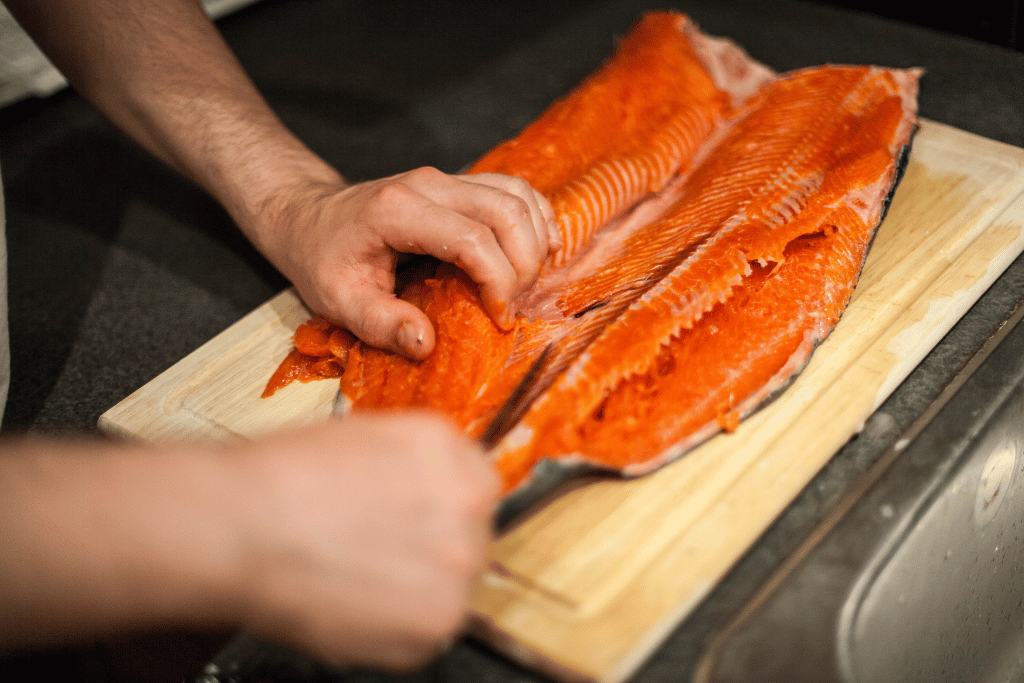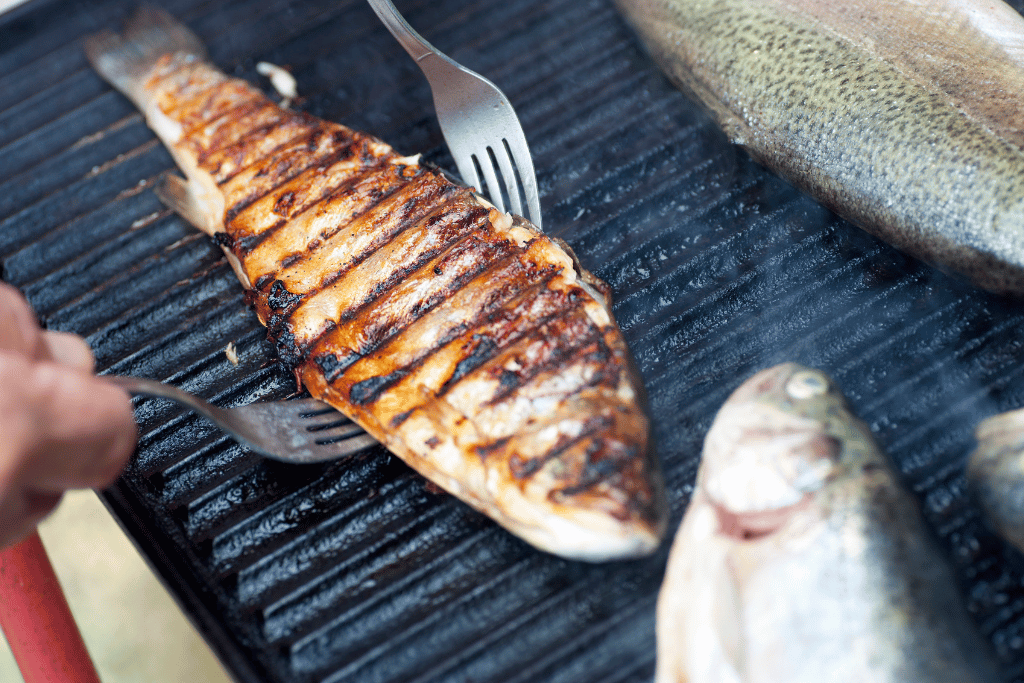
Filletting a sea trout may seem daunting at first, but with the right guidance and a bit of practice, you’ll soon be able to transform your catch into delicious fillets that are ready for the frying pan or grill. This article aims to provide you with a comprehensive overview of the sea trout filleting process, ensuring that you not only master the technique but also understand the nuances that make this fish special.
2. Understanding Sea Trout
– Definition and Characteristics
Sea trout, also known as “salter,” is a migratory fish species found in both saltwater and freshwater environments. It’s closely related to salmon and boasts a similar pink-hued flesh. The flavor profile of sea trout is a delightful blend of the ocean’s brininess and the subtle sweetness of freshwater fish.
– Habitat and Behavior
Sea trout are known for their migratory patterns, spending much of their lives in the sea and returning to freshwater rivers and streams to spawn. Understanding their behavior is essential for successful fishing, as it helps you target the right locations and times.
3. Equipment Needed
– Types of Knives
Choosing the right knife for filleting sea trout is crucial. A flexible, sharp fillet knife is recommended for precise cuts. Make sure the knife is comfortable to hold and maneuver.
– Cutting Board Options
A sturdy, non-slip cutting board is essential. Consider using a board with a groove to catch any juices, making cleanup easier.
– Other Essential Tools
Gather tools like kitchen shears, tweezers, and a clean cloth for wiping your hands and the fish during the process.
4. Safety Precautions
– Knife Safety
Using a sharp knife is safer than a dull one, as it requires less force. Keep your fingers away from the blade’s path and work in a well-lit, clutter-free area.
– Handling the Fish
Handle the fish with care to avoid damaging the flesh. Hold it firmly but gently, using a clean cloth for a better grip.
– Protecting Your Hands
Fish can be slippery, and filleting involves precise cutting. Consider wearing cut-resistant gloves to protect your hands.
5. Step-by-Step Guide

– Preparation of the Fish
Start by washing the fish and placing it on the cutting board. Ensure it’s properly chilled to make filleting easier.
– Initial Cuts
Make an incision behind the gills to create an entry point for filleting. Use steady, controlled strokes to avoid tearing the flesh.
– Filleting Technique
Follow the fish’s bone structure as you glide the knife along the backbone, separating the fillet from the bones. Take your time and maintain a gentle touch.
6. Removing the Skin
– Techniques for Skin Removal
Removing the skin requires finesse. Slide the knife’s edge between the skin and flesh at a slight angle, using a back-and-forth motion.
– Tips for Precision
Take your time when removing the skin to minimize flesh wastage. A delicate touch will ensure you retain the most flavorful part of the fillet.
7. Deboning the Fillet

– Locating the Bones
Gently press along the fillet to identify any remaining bones. Use your fingers or tweezers to feel for pinbones.
– Different Deboning Methods
Learn various deboning techniques, like the V-cut method, which removes bones without affecting the fillet’s shape.
8. Proper Fillet Maintenance
– Cleaning and Rinsing
Thoroughly rinse the fillets to remove any residual scales or debris. Pat them dry with a clean cloth before cooking.
– Storing the Fillets
If not cooking immediately, store fillets in an airtight container in the refrigerator. Consume them within a few days for the best flavor.
9. Cooking Tips and Recipes

– Best Cooking Methods
Sea trout fillets are versatile and can be grilled, baked, pan-fried, or even smoked. Experiment with different methods to find your favorite.
– Delicious Sea Trout Recipes
Try out mouthwatering recipes like Lemon Herb Grilled Sea Trout or Baked Sea Trout with Garlic Butter for a gourmet dining experience.
Conclusion
Filletting sea trout is a rewarding skill that opens up a world of culinary possibilities. By following this comprehensive guide, you’ll not only master the art of filleting but also gain insights into selecting, preparing, and cooking sea trout. Whether you’re an angler looking to enhance your catch or a seafood enthusiast seeking a new culinary adventure, filleting sea trout will become a valuable addition to your skill set.
Frequently Asked Questions
How to know if a sea trout is fresh?
Look for clear eyes, vibrant colors, and a fresh, briny scent. Avoid fish with dull eyes, slimy texture, or a strong fishy smell.
Can I fillet a frozen sea trout?
While it’s easier to fillet a thawed fish, you can fillet a partially frozen one. However, thawing it first is recommended.
What if I don’t have a fillet knife?
While a fillet knife is ideal, a sharp, flexible knife can also work. Just ensure it’s comfortable to hold and maneuver.
Can I cook sea trout with the skin on?
Absolutely! Cooking with the skin on adds flavor and protects the delicate flesh. Ensure the skin is properly scaled and cleaned.
How do I prevent overcooking sea trout?
Cook sea trout until the flesh is opaque and flakes easily with a fork. Avoid overcooking to maintain its tenderness.